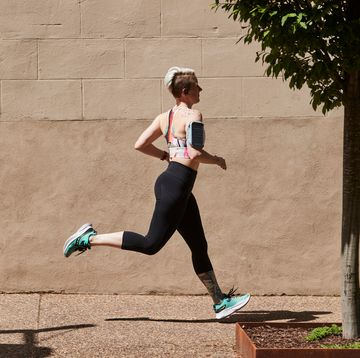Why You Might Experience Nausea After Running—and What to Do to Avoid It
No one wants to puke after a hard workout. Tame discomfort with these tips.
Endurance athletes and lovers of intense exercise all share an unpleasant, but common experience: feeling nauseated after running and potentially throwing up. That unsettled feeling in your stomach discriminate between the weekend warrior or the seasoned pro.
One infamous example: the end of Arizona’s 2020 Marathon Project race. Noah Droddy, who finished second overall, ran a personal best of 2:09:09, putting him (at the time) as the ninth all-time fastest among American runners. Still, he battled nausea in the final few miles, which he told Citius Mag podcast is a common occurrence when he races. “To be honest, I’ve thrown up after every marathon I’ve done. Stop. Throw up. No pause,” he said.
While feeling some nausea after running won’t necessarily sidetrack your entire effort, it certainly doesn’t help and it’s better to take care of your digestive health than just accept this problem. Here are some possible reasons for your gut’s dissatisfaction and ways you can combat it so you feel better through your runs and after.
John Vasudevan, M.D. is an associate professor at the University of Pennsylvania. He is board-certified in Physical Medicine & Rehabilitation and Sports Medicine. He is a Team Physician for UPenn Athletics and medical director of the Broad Street Run and Philadelphia Distance Run, and previously for the Rock 'n' Roll Half-Marathon and Tri-Rock Triathlon in Philadelphia. He is a director of the running and endurance Sports Medicine Program at Penn Medicine. Dr. Vasudevan provides non-operative management of musculoskeletal conditions affecting athletes and active individuals of all levels, and combines injury rehabilitation with injury prevention. He utilizes a variety of ultrasound-guided procedures and regenerative approaches such as platelet-rich plasma and percutaneous ultrasonic tenotomy. He sees patients at the Penn Medicine and the Philadelphia Veterans Administration hospital. Dr. Vasudevan attended medical school at the University of Wisconsin School of Medicine and Public Health in Madison. After his Transitional Year in Tucson, Arizona, he went to residency in PM&R at Thomas Jefferson University in Philadelphia and onwards to Stanford University for his fellowship in Sports Medicine. He has been in practice at the University of Pennsylvania since 2012.
Watch Next


How to Fall in Love With Running

Why Do I Taste Blood When I Run?

How Many Miles is 10,000 Steps?

Want to Run Your First Race? Here’s What to Know













